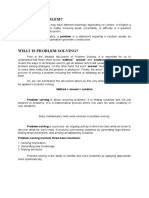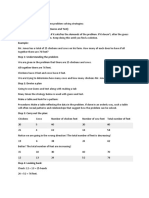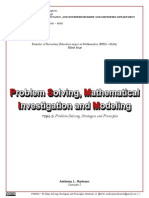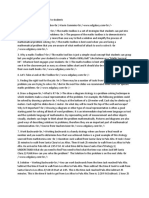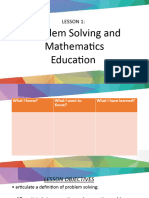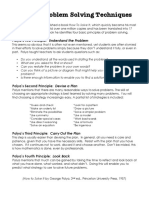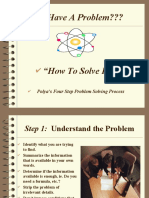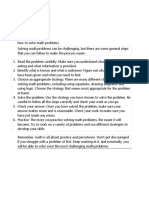0% found this document useful (0 votes)
28 views2 pagesEffective Problem-Solving Techniques in Math
The document outlines effective problem-solving techniques in mathematics, emphasizing the importance of careful reading, visualization, and choosing appropriate strategies. It suggests breaking complex problems into manageable parts and checking the reasonableness of solutions. Additionally, it highlights the need for flexibility and stamina in tackling challenging problems.
Uploaded by
onlinecseclessonsCopyright
© © All Rights Reserved
We take content rights seriously. If you suspect this is your content, claim it here.
Available Formats
Download as PDF, TXT or read online on Scribd
0% found this document useful (0 votes)
28 views2 pagesEffective Problem-Solving Techniques in Math
The document outlines effective problem-solving techniques in mathematics, emphasizing the importance of careful reading, visualization, and choosing appropriate strategies. It suggests breaking complex problems into manageable parts and checking the reasonableness of solutions. Additionally, it highlights the need for flexibility and stamina in tackling challenging problems.
Uploaded by
onlinecseclessonsCopyright
© © All Rights Reserved
We take content rights seriously. If you suspect this is your content, claim it here.
Available Formats
Download as PDF, TXT or read online on Scribd
/ 2







